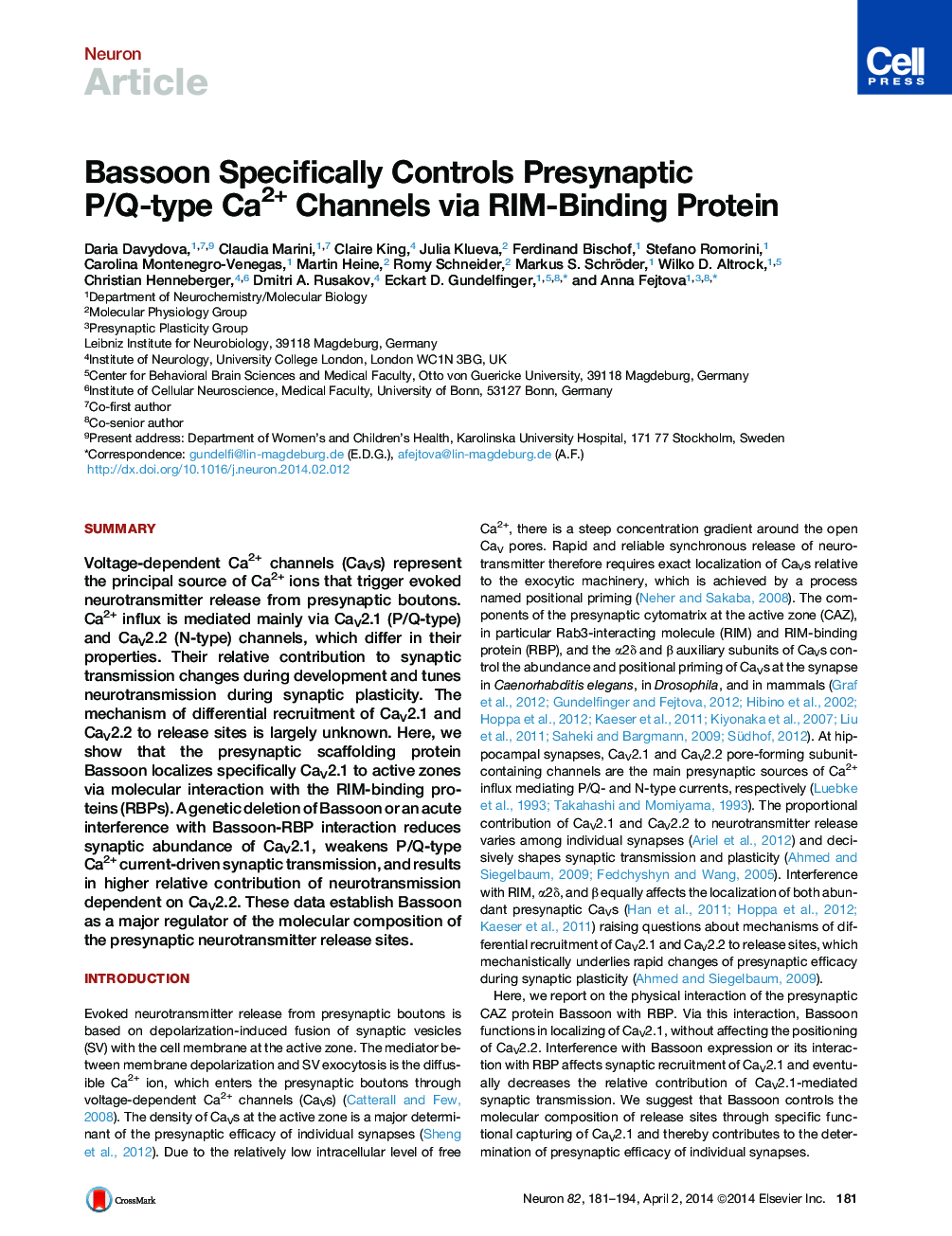| Article ID | Journal | Published Year | Pages | File Type |
|---|---|---|---|---|
| 4321090 | Neuron | 2014 | 14 Pages |
•Bassoon binds RIM-binding protein (RBP) at the presynaptic active zone•The interaction with RBP links Bassoon to presynaptic Ca2+ channels (CaVs)•Bassoon specifically controls the localization of Cav2.1 without affecting CaV2.2•Normal P/Q-type channel-driven transmission depends on Bassoon-RBP interaction
SummaryVoltage-dependent Ca2+ channels (CaVs) represent the principal source of Ca2+ ions that trigger evoked neurotransmitter release from presynaptic boutons. Ca2+ influx is mediated mainly via CaV2.1 (P/Q-type) and CaV2.2 (N-type) channels, which differ in their properties. Their relative contribution to synaptic transmission changes during development and tunes neurotransmission during synaptic plasticity. The mechanism of differential recruitment of CaV2.1 and CaV2.2 to release sites is largely unknown. Here, we show that the presynaptic scaffolding protein Bassoon localizes specifically CaV2.1 to active zones via molecular interaction with the RIM-binding proteins (RBPs). A genetic deletion of Bassoon or an acute interference with Bassoon-RBP interaction reduces synaptic abundance of CaV2.1, weakens P/Q-type Ca2+ current-driven synaptic transmission, and results in higher relative contribution of neurotransmission dependent on CaV2.2. These data establish Bassoon as a major regulator of the molecular composition of the presynaptic neurotransmitter release sites.
